Not Choosing the Right Spot for Your Herb Garden
One of the 5 common mistakes to avoid in herb gardening is not choosing the right spot to plant your herb garden. Selecting an appropriate location is crucial for your herbs to thrive. Situating your herb garden in the wrong place can lead to poor growth and lower yields of basil, thyme, rosemary and other herbs.
When deciding where to put your herb garden, you need to consider factors like sunlight, drainage and convenience. Herbs require at least 6 hours of direct sunlight daily, so be sure to choose a sunny spot, not shaded by trees or buildings. Proper drainage is also key – herbs can’t tolerate wet, soggy soil. Pick a spot that drains well after watering or rains. And for convenience, plant your herbs close to your kitchen, so they’re handy when cooking.
Here are some tips on choosing the optimal spot for your herb garden and avoiding the common mistake of picking the wrong location:
Sunny Spot
One of the most important considerations is sunlight when siting your herb garden. Herbs need a minimum of 6 hours a day of direct sun exposure to thrive. Less light will result in reduced growth and lower yields. Picking a spot that receives sunlight for the majority of the day is ideal. South-facing locations are great herb garden sites.

If you don’t have a sunny yard, look for the sunniest spot available. Just be sure to observe the light conditions throughout the day and over the seasons to ensure adequate sunlight before planting. A bit of afternoon shade is fine, but avoid spots shaded for large portions of the day.
Well-Drained Soil
Proper drainage is another key factor when choosing where to locate your herb garden. Herbs can’t tolerate soggy, waterlogged soil. Excess moisture causes root rot and other problems. Ideally, select a garden spot with sandy loam soil that drains well after watering and heavy rains.
If your yard doesn’t have a well-draining area, build a raised garden bed and fill it with a soil mix formulated for drainage. Adding sand, gravel or perlite to native soil can also improve drainage before planting an in-ground herb garden. Installing drainage pipes under a sunken garden can divert excess moisture.
Close to the Kitchen
For convenience, situate your herb garden close to your kitchen and main living areas. This allows you to easily harvest fresh herbs to use in cooking. Having your herbs just steps from the kitchen door makes it more likely you’ll utilize them. It also minimizes bruising of delicate leafy herbs during transport from the garden.
When choosing the perfect spot, be sure it’s convenient, including easy access to water for irrigation. Consider creating a dedicated herb garden right outside the kitchen door or incorporating herbs into existing beds and containers nearby. Just avoid planting them too close to walls or foundations, where drainage could be problematic.
By properly siting your herb garden in a location with abundant sun, good drainage and convenience, you’ll avoid the common mistake of choosing the wrong spot. Taking these key factors into account will help ensure your herbs thrive and provide maximum yields over time.
Remember, one of the 5 common mistakes to avoid in herb gardening is not picking the right place to plant your herb garden. Be sure to select a spot that gives herbs the growing conditions they require – at least 6 hours of direct sunlight daily, well-drained soil and close proximity to your kitchen. With the proper location, your herb garden is sure to flourish.
Failing to Use the Right Soil for Herb Gardening
One of the 5 common mistakes to avoid in herb gardening is failing to use the right type of soil. Having soil with the proper structure and nutrients is crucial for growing healthy, productive herb plants. When setting up an herb garden, be sure not to make the mistake of using poor quality soil, as this can seriously impact how well your herbs grow.
The ideal soil for herb gardening is loose, fertile, and fast-draining. Heavy clay soils or very sandy soils often will not provide the aeration and drainage that most culinary herb plants prefer. Before planting, test your existing soil to determine if any amendments need to be added to achieve better texture and nutrition. You can have your soil analyzed by your local agricultural extension office for a full report.
Here are some key things to look for when evaluating soil for an herb garden:
Drainage – Herbs need soil that drains readily after watering and rainfalls. Stagnant moisture can cause root rot and other problems. Mixing in materials like compost, peat moss, or perlite can help improve drainage in dense soils.
pH Level – Most culinary herbs grow best in slightly acidic to neutral soil, with a pH of 6.0-7.0. Extremely acidic or alkaline conditions can make some nutrients unavailable to plants. Test kits can determine if the pH needs adjusting with lime or sulfur.
Nutrients – Herbs thrive when the soil contains adequate nitrogen, phosphorus, and potassium. Organic matter offers nutrients and also improves moisture retention and drainage. Mixing compost, manure, or high-quality potting soil into garden beds provides nutrition.
When preparing a new herb garden, thoroughly mix amendments like compost and peat moss into the existing soil to improve its structure and nutrient content before planting. For potted herbs, use a commercial potting mix formulated for containers rather than garden soil, which can become too compacted.
By taking the time to cultivate and enrich your soil at the start, your herbs will establish better roots, grow faster, and have more robust flavor. This gives them the strong foundation needed to withstand common herb gardening mistakes and still produce an abundant harvest. Don’t skip this vital first step for a successful, productive herb garden.
Failing to amend problem soil is one of the top 5 common mistakes to avoid in herb gardening. Ensure your herbs get off on the right foot by preparing soil with ideal drainage, pH, and nutrients needed for lush, flavorful growth before you plant. Culinary herbs are not very forgiving if their soil conditions are poor from the start, so don’t make the mistake of failing to use the right soil. With a well-prepared growing medium, you’ll be harvesting delicious herbs all season long.
Not Watering Herbs Properly
One of the most common mistakes in herb gardening is not watering herbs properly. Getting the watering schedule right for your herbs can seem tricky, but it’s important for helping them thrive. Here’s what you need to know about properly caring for herbs when it comes to their water needs.
How Much Water Do Herbs Need?

When it comes to watering any plants, herbs included, it’s essential to pay attention to some key factors. These include the specific needs of the herb variety you’re growing, the soil type, weather and climate conditions, the stage of growth your plants are at, and even the type of container you might be using.
Some general guidelines can help guide your watering practices, but getting to know your individual herbs will ensure you’re giving them just what they require. Herbs native to hot, dry regions like rosemary, thyme, sage, and oregano require less frequent watering. Leafy herbs like mint, basil, and parsley enjoy consistently moist (but not soggy) soil.
Getting the balance right is essential to avoid common herb gardening mistakes when watering. Too much water can cause root rot and other problems. Too little can lead to stunted growth or even completely dried out and dead plants.
Signs You’re Underwatering Your Herb Garden
It’s easy to underwater herb plants without realizing it. Check for these signs that your herbs need more frequent or thorough watering:

– Wilting or drooping leaves that don’t bounce back after watering
– Brown or yellowed leaf edges
– Lack of new growth
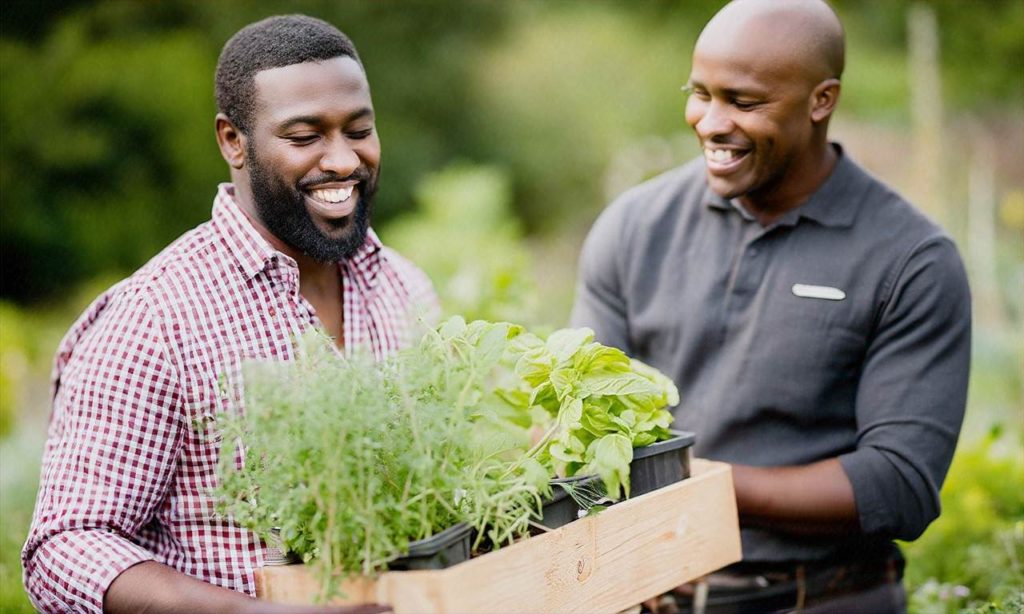
– Stunted plants
– Soil is bone dry just an inch below the surface
Tips for Watering Herbs Properly
Now that you know what to look out for, let’s go over some tips to help you get your herb watering schedule right. Here are some best practices for avoiding the common herb gardening mistake of improperly caring for water needs:
– Water first thing in the morning so leaves can dry out in the sun. This prevents fungus or mildew growth.
– Check soil moisture before watering. Stick your finger in about an inch. Only water if soil is partly or completely dry.
– Group herbs by water needs. This makes it easier to manage different watering schedules.
– Use drip irrigation or soaker hoses to slowly deliver water to soil. This is more efficient than sprinklers.
– Add mulch around plants to retain moisture and reduce water needs. Organic mulches like bark chips work great.
– Consider using self-watering containers or reservoirs under pots to ensure a consistent moisture supply.
– Adjust watering frequency and volume based on weather, plant size, and growth stage. Less when cool, more when hot. Less when young, more when mature.
By being attentive to all the variables that affect herb water needs, you can avoid going wrong with improper watering. Pay attention to signs of under or overwatering and adjust as needed. Grouping plants and using efficient irrigation can make your herb garden watering routine much simpler.
Remember, herbal plants are very forgiving, so don’t stress too much about getting it 100% right 100% of the time. Just check soil frequently, learn your plants’ signs of thirst, and provide water as needed. You’ll have a thriving herb garden in no time!
Avoiding the common herb gardening mistake of improperly watering herbs takes some attentiveness and getting to know your plants. But it’s worth the effort for bountiful basil, parsley, rosemary and more to flavor your cooking all season long. For more tips on caring for herbs, be sure to check out our other articles on fertilization, proper sunlight, and more aspects that lead to success.
And if you’ve struggled with properly watering herbs in the past, don’t be too hard on yourself! It’s one of the most common herb gardening mistakes out there. Just follow these useful tips to get your watering routine right. Your herbs will be happy, healthy, and ready to spice up your meals in no time.
Not Giving Herbs Enough Sunlight
One of the most common mistakes in herb gardening is not giving your herbs enough sunlight. Herbs love light, and not getting enough of it can result in weak, leggy growth and reduced flavor in the leaves. When it comes to herb gardening mistakes regarding sunlight, it’s important to understand each herb’s unique light needs. With a little planning and care, you can ensure your herb garden thrives in the sunshine.
Most culinary herbs grow best in full sun, which means at least 6 hours of direct sunlight per day. Some varieties, like thyme, oregano, lavender, and rosemary really thrive when given even more light. Without adequate sunlight, these Mediterranean herbs will become stunted and woody in texture. Leafy herbs like basil, parsley, cilantro, and dill also need a good dose of sun to bring out their signature flavors and yield abundantly.
When choosing a site for your herb garden, make sure to pick a sunny spot that gets sunlight for most of the day. A south-facing location is ideal, as it receives the most direct light. Morning sun is better than afternoon sun, as it helps dry dew from the leaves, reducing the chance of fungus and mildew. If you don’t have an optimal sunny spot, consider amending the site with reflective materials like light-colored gravel or walls to maximize sunlight exposure.
While most culinary herbs need full sun, there are some that actually prefer partial shade. Mint, lemon balm, and chervil grow best with about 4 hours of sunlight and afternoon shade. Too much hot sun can cause these herbs to wilt. If you only have a very intensely sunny spot, adding a shade structure, tree canopy, or planting taller herbs as buffers can help create the right environment.
Pay attention to how your herb plants respond to sunlight over time. Signs of insufficient light include plants that are growing tall and leggy with few leaves, pale colored foliage, and reduced flavor. These issues can often be corrected by transplanting herbs to a sunnier location. It’s one of the most common herb gardening mistakes, but thankfully, it can be easily fixed!
In addition to location, you can also manipulate sunlight exposure by timing. Starting herbs from seed indoors or in a greenhouse allows tender new plants to grow with protection. This prevents issues like bolting that can happen if immature seedlings are put straight into intense outdoor sunlight. When transplanting outdoors, it’s important to gradually acclimate seedlings over 7-10 days to prevent sun damage.
Here are some key tips to ensure your herbs get all the sunlight they need:
– Choose a site with at least 6 hours of direct sun daily for most culinary herbs. South facing is best.
– Space plants properly so each has adequate air circulation and sun exposure as they grow.
– Amend shady areas with gravel, walls, or reflective materials to increase sunlight.
– Provide shade structures for herbs like mint that need protection from intense midday sun.
– Gradually acclimate transplants over 7-10 days to prevent sun damage.
– Observe plants and watch for leggy growth or pale leaves, moving to sunnier spots as needed.
With attention to light needs and a little trial and error, you’ll discover the perfect sun-drenched spots for your herbs to thrive. Avoid the common mistake of insufficient sunlight, and your herb garden will reward you with vigorous, flavorful plants. For more tips on preventing mistakes with watering, fertilizing, and more, check out our full article on the 5 most common herb gardening mistakes to avoid for success growing herbs.
Forgetting to Fertilize and Prune Herb Plants
One of the most common mistakes in herb gardening is forgetting to fertilize and prune herb plants. Proper fertilization and pruning are essential for keeping herbs healthy and productive. Avoid this common herb gardening mistake with some simple practices.
Why Fertilizing Herbs is Important
Herbs need nutrients from fertilizers to thrive. Feeding herbs encourages vigorous growth and abundant harvests. Without fertilizer, herb plants can become stunted and produce smaller yields. Herb plants deficient in nutrients also become more susceptible to pests and diseases.
Fertilizing herbs regularly prevents nutrient deficiencies. Most herbs grow best with a balanced fertilizer applied according to label instructions. Organic fertilizers like compost, fish emulsion, worm castings, or manure also nourish herbs effectively.
Aim to fertilize herb plants at least once early in the growing season. Additional light feedings every 3-4 weeks will sustain healthy growth. Pay close attention to signs of nutrient deficiencies like yellowing leaves or poor flowering and fruiting. Targeted applications of fertilizer quickly correct these issues.
Why Pruning is Crucial for Herbs
Pruning is another often overlooked herb care task. Trimming herbs promotes bushy, compact growth instead of leggy, floppy plants. Pruning also maximizes air circulation and light exposure. With improved growing conditions, herbs stay vigorous and productive for harvests.
Pruning herb plants involves:
– Pinching off spent flower heads to prolong leaf production. Removing faded blooms signals the plant to keep generating foliage.
– Snipping off damaged leaves and stems which can harbor pests and diseases. Clean cuts help herbs heal rapidly.
– Cutting back leggy growth and older stems to encourage new, healthy shoots.
– Shaping herbs to preserve a compact habit, especially useful for decorative specimens.
Most culinary and medicinal herbs respond well to pruning. Woody herbs like rosemary may need rejuvenation pruning every 2-3 years. Trim mature rosemary stems to 6 inches above soil level to renew growth.
When to Fertilize and Prune Herb Plants
Timing matters for proper feeding and pruning. Focus fertilizing efforts in early spring as growth resumes. Prune herbs during active growth periods, mostly spring through mid-summer. Remove no more than one-third of the plant during pruning sessions to avoid stress.

Here is a general calendar for fertilizing and pruning common culinary herbs:
Basil – Fertilize monthly from transplanting until first flower. Pinch back flower heads and prune for shape through summer.
Chives – Scratch in balanced organic fertilizer in early spring. Remove faded blooms through season to prolong leaf production.
Cilantro/Coriander – Fertilize every 2-3 weeks while actively growing. Prune often as it tends to bolt and go to seed rapidly.
Dill – Fertilize when transplanting seedlings. Prune early in season to delay flowering and extend harvests.
Mint – Top dress with compost or organic fertilizer each spring. Prune leggy stems any time to contain spread.
Oregano/Marjoram – Feed once in early spring, prune tips early to mid-summer if plants become leggy.
Parsley – Fertilize monthly during first year. Prune often by harvesting outer stems.
Rosemary – Apply slow release fertilizer in early spring every 2-3 years. Prune annually to shape.
Sage – Scratch fertilizer into soil in early spring. Prune late spring to mid-summer to remove woody stems and shape plants.
Thyme – Top dress with compost or organic fertilizer early in season. Prune lightly to tidy appearance.

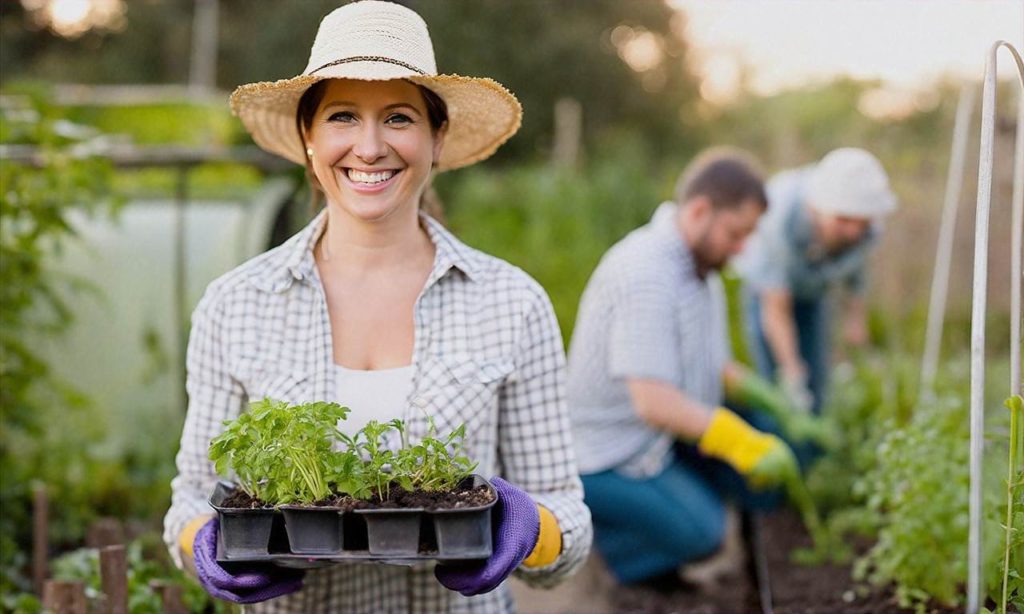
Avoid the Common Herb Gardening Mistake of Forgetting Fertilizer and Pruning
Keep your herb garden healthy and bountiful by regularly feeding and pruning plants. Herbs thrive with a little attentive care through the seasons. Avoid forgetting these key maintenance tasks! Proper fertilization gives herb plants the nutrients they need for vigorous growth and plentiful harvests. Strategic pruning contains herbs within their space while removing damaged growth. Well-nourished and neatly pruned herbs will be poised to grace your kitchen all season long.
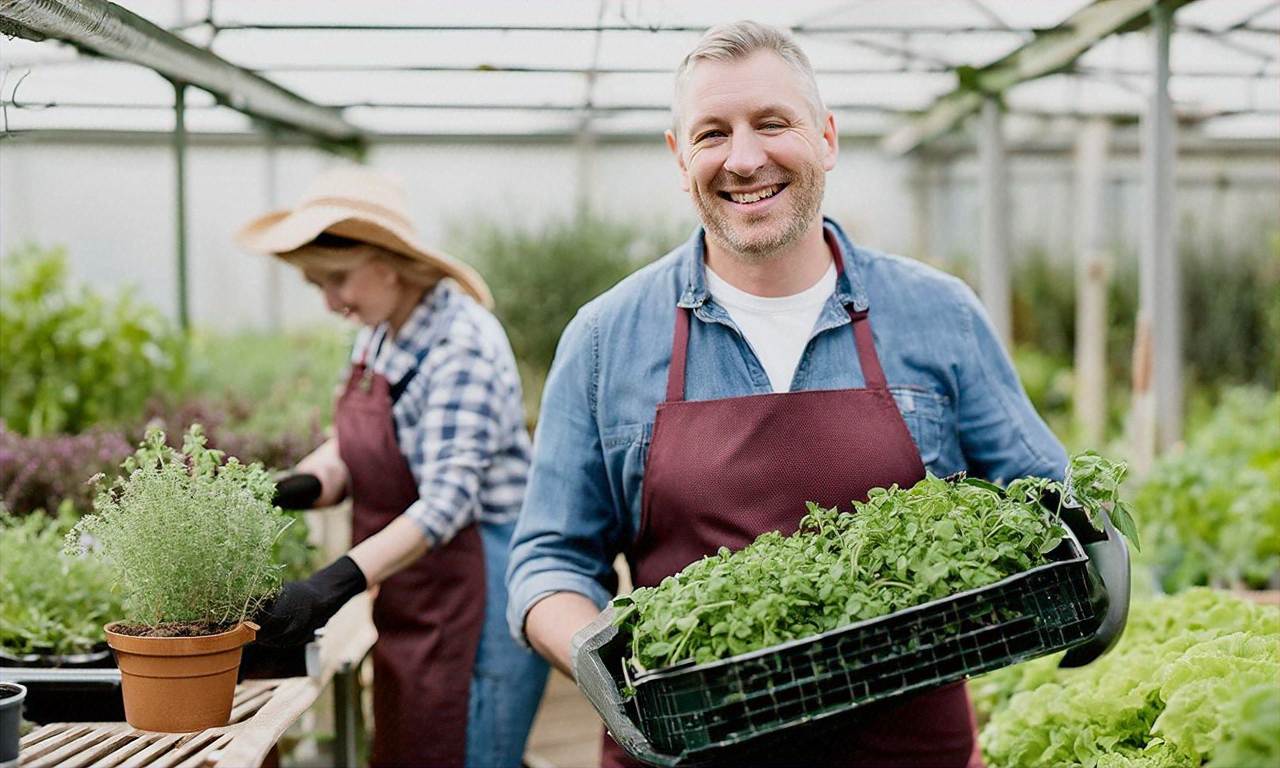
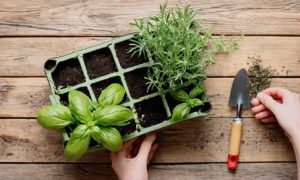


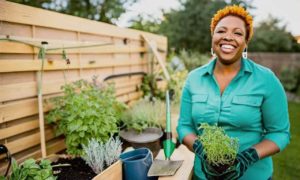
No comment yet, add your voice below!